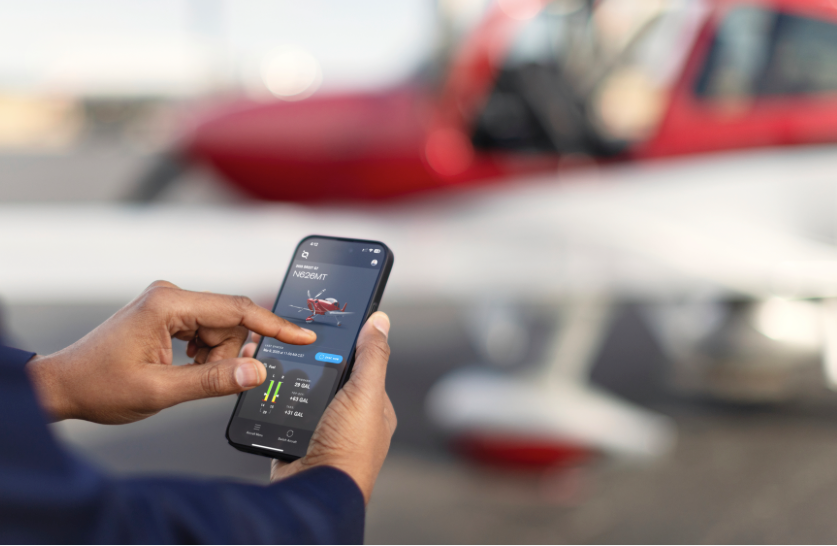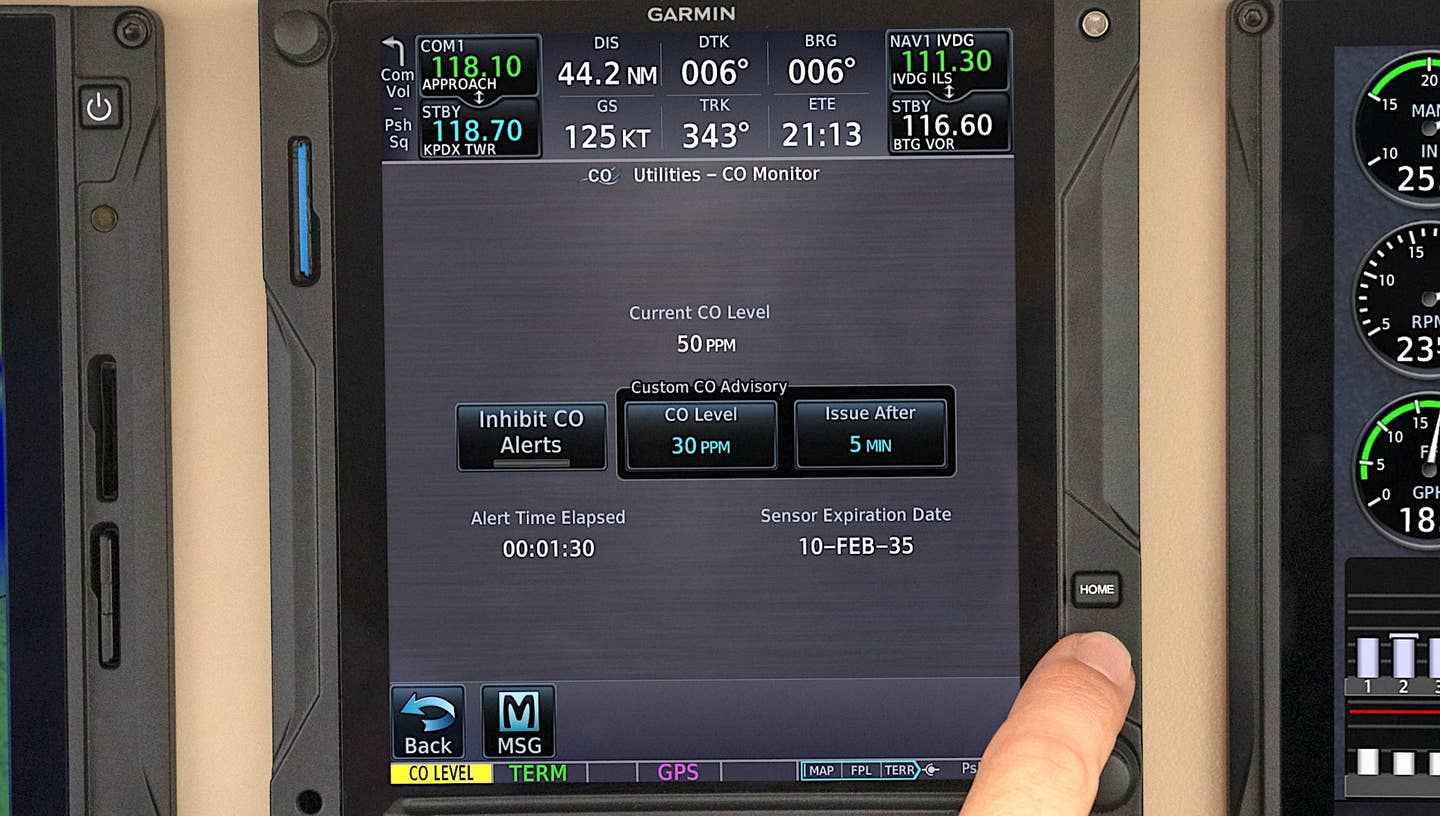DME Basics
Distance measuring equipment is among the most valuable black boxes on the panel, especially for the IFR pilot. But there’s a lot more to DME than turning it on and watching the numbers count down. AVweb’s avionics guru explains how DME works, its inherent errors and limitations, and what to do if it stops working.

 Distance measuring equipment—often called DME—is one of the most valuable pieces ofavionics in the aircraft. The main purpose of the DME is to display your distance from aVORTAC, VOR-DME, or localizer. (Some NDB stations have colocated DME, but not many.) DMEreduces pilot workload by continuously showing your distance from the station, accurate towithin a half-mile or three percent (and usually better). In addition, most DMEs displaytime-to-station and groundspeed.
Distance measuring equipment—often called DME—is one of the most valuable pieces ofavionics in the aircraft. The main purpose of the DME is to display your distance from aVORTAC, VOR-DME, or localizer. (Some NDB stations have colocated DME, but not many.) DMEreduces pilot workload by continuously showing your distance from the station, accurate towithin a half-mile or three percent (and usually better). In addition, most DMEs displaytime-to-station and groundspeed.
Combined with VOR, DME permits you to determine your exact position from a singleground station; VOR tells you what radial you're on and DME tells how far out on thatradial you are.
DME is required by the FARs for flight at or above FL240 if VOR navigation is used.Some instrument approach procedures require DME—these always have "DME" intheir title (e.g., VOR DME RWY 5 or LOC DME BC A). Other approaches use DME to defineoptional step-down fixes to permit lower minimums.
How It Works
You tune your DME by selecting a VOR or localizer frequency, either on the DME itselfor on a VOR/LOC receiver to which the DME is channeled. Although you dial in the VHFfrequency of a VOR or localizer in the 108-118 Mhz band, you're actually tuning the DME totransmit on a "paired" UHF frequency in the 978-1213 Mhz band (also called the"L-band") and to receive on a UHF frequency that is offset from the transmitfrequency by 63 Mhz.
There are 200 DME channels which are paired with the 200 VOR/LOC channels. So forexample if you tune to the VOR frequency 112.40 Mhz, your DME is automatically channeledto 1010.00 Mhz. But pilots normally never see the actual DME channel; only the paired VORfrequency.
Once you've channeled your DME, it starts transmitting a stream of interrogations tothe ground station. Each interrogation is made up of a pair of RF pulses. When the groundstation receives the interrogation, it waits for 50 microseconds and then sends a pair ofreply pulses back to the aircraft. Incidentally, the purpose of the 50 microsecond delayis to eliminate the possibility of uncoordinated operation when the aircraft is very closeto the ground station
Your airborne DME equipment receives the reply and measures the elapsed time from whenit sent the interrogation until it received the reply. It subtracts the 50 microseconddelay that the ground station introduced to come up with the round-trip time. From this,it can figure out its exact distance from the ground station using simple arithmetic,given the fact that it takes 12.359 microseconds for a signal to go out and return onenautical mile. It then displays the computed distance on your DME readout.
If this sounds a lot like how secondary radar works, it is. Only backwards. Your DMEunit is essentially a little radar interrogator, and the DME ground station is just afancy radar transponder.
There's one little complication, however. The ground station may be replying tohundreds of other airborne DMEs in addition to yours. How can your DME sort out replies toits interrogations from replies to other aircraft? Here's where some clever magic comesin. Your DME doesn't send an equally-spaced stream of interrogations, but randomly jittersthe spacing of its interrogations to create a unique "signature". It thenexamines the ground station replies looking for a sequence with the same randomly jitteredsignature. When it finds that, it knows they're replies to its interrogations.
DME Ident
Most pilots were taught to listen to and verify the Morse code identification of VORstations, but many pilots don't realize that DME also has identification. When a VOR andDME are co-located (as in a VORTAC or VOR-DME station), the DME transmits the same codedident as the VOR, but sends it during the pause between successive VOR idents. The DMEident is also higher-pitched: 1350 Hz compared with 1020 Hz for a VOR ident.
Most audio panels have a switch that allows you to listen to the DME ident. I stronglyrecommend verifying the DME audio. It's quite possible to have your VOR receiver lock ontoone station and your DME to lock onto a different station that shares the same frequency.This is most likely at high altitude over flat terrain, and it has happened to me morethan once.
DME Errors
DME displays distance in nautical miles, groundspeed in knots, and time-to-station inminutes. Beware, however, that DME groundspeed and time-to-station are only accurate whenyou are flying directly to or from the ground station. If you are flying in any otherdirection, you will see groundspeed that is erroneously low and time-to-station that iserroneously high.
If you are flying away from the station, groundspeed will be accurate but"time-to-station" will actually show "time-from-station" and willincrease as you get farther and farther from the station.
Another thing to remember is the DME measures the straight-line distance from theaircraft to the ground station. This is called "slant range" and is slightlymore than the actual horizontal distance because of the difference in elevation betweenthe aircraft and the station. The most extreme case of "slant range error"occurs when the aircraft passes directly over the station; instead of reading zero, theDME shows the altitude of the airplane above the station (in nautical miles).
For example, if the station is at sea level and you're flying at 9000 feet, the DMEwill show 1.5 NM as you pass directly over the station. When you're 2 NM away from thestation horizontally, the DME will read 2.5 NM. At greater distances from the station,slant-range error is considered negligible.
Slant range error also affects groundspeed and time-to-station displays when you'reclose to the station. Displayed DME groundspeed drops below actual groundspeed as youapproach the station and then climbs back to normal after you pass it. Displayed DMEtime-to-station may not count all the way down to zero as you fly over the station.
Effective Range
Like radar, DME is limited to line-of-sight. Regardless of how much power your unithas, if it's not within direct line-of-sight of the ground station, it's not going towork. That doesn't mean that you actually have to see the ground station with your eyes inorder for the DME to work! At 5000 feet over flat terrain, you might expect to get about60 miles of DME range. Over rough terrain, the range can be much shorter: 30 or 40 miles.
Another thing that can limit DME range is high air traffic density. The DME groundstation can only respond to a certain number of interrogations in a given period of time.If too many aircraft are interrogating the ground station, it will automaticallydesensitize its receiver so that it can only hear and reply to the strongestinterrogations. This can result in shorter-than-normal DME range, particularly for smallaircraft with their low-powered DME units.
One nice thing about DME is that, unlike LORAN or ADF or even VOR, it is seldomaffected by precipitation static buildup or thunderstorms.
Reliability
Reliability of DMEs have come a long way in the past twenty years. The newerall-digital DMEs like the King KN-64 or the Narco 890 are extremely reliable and seldomrequire service. Older analog DMEs like the King KN-65 or Narco DME-190 are far moretroublesome and can be very expensive to repair. The older units also used lots of powerand needed lots of cooling. So if your older DME is on the fritz, you might considerreplacing it with a newer all-digital model.
Once you've flown with a DME, it's hard to imagine doing without it. Eventually, GPSmay supersede the need for DME, but we're not at that point yet.






